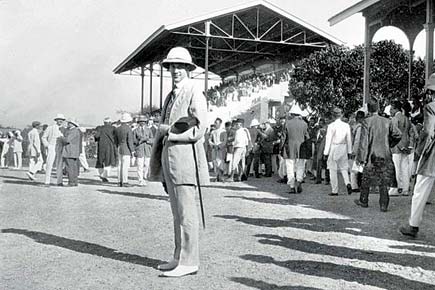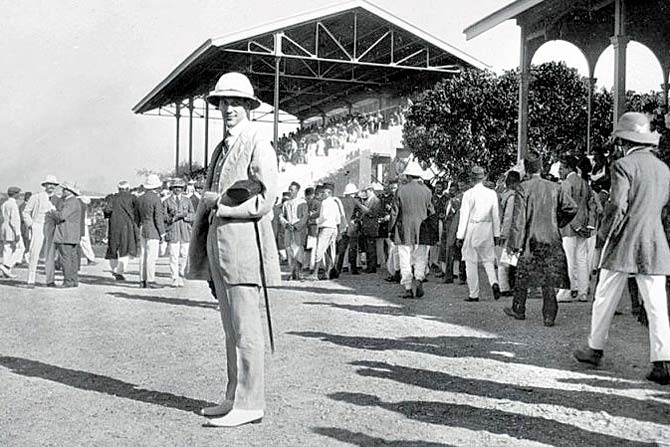On her first official trip to India, Francesca Cartier Brickell, a direct descendant of the celebrated family of jewellers, will be in town to talk about Cartier's love for the East

If jewels could tell stories, what would those be? Francesca Cartier Brickell is set to answer that question through her website research project (www.creatingcartier.com) and a book that she is writing, Creating Cartier. Both delve into the story of her great-grandfather, Jacques Cartier, who passed away in 1942 and had a long history with Indian jewellery. Cartier Brickell is a direct descendant of the Cartier family, the name that King Edward VII of England referred to as "the jeweller of kings and the king of jewellers".

ADVERTISEMENT
A former fund manager with Barclays and Royal Bank of Scotland, Cartier Brickell is retracing her great-grandfather’s footsteps as he travelled through the subcontinent. As part of her research, she will make stopovers at Mussoorie and Vadodara to meet the descendants of the gemstone dealers and nobility that Jacques was associated with. Later this week, Cartier Brickell will be in Mumbai on October 6 to deliver a talk as part of auction house Saffronart’s conference on The Timeless Legacy of Indian Jewels.
Edited excerpts from an interview:
How has your research on the Cartier legacy been shaping up?
I have been researching the history of Cartier for the last 10 years through an unpublished collection of photographs, letters and journal entries. I also recorded my grandfather, Jean-Jacques’ memoirs before he passed away a few years ago. One of the most interesting stories in this material is of Cartier’s long association with India. Some brief background on Cartier: It was started in 1847 with my great-great-great-grandfather, Louis-François Cartier. However, it was my great-grandfather, Jacques Cartier, who brought the name to international renown along with his brothers, Louis and Pierre. While Louis ran the Paris branch, Pierre oversaw the New York one and Jacques helmed the London store. As part of his interest in furthering Cartier’s legacy, Jacques travelled to British colonies. He spent time in India from 1911 to 1940. Much has been written about Cartier’s historic links with India, but not much yet about Jacques. Among the three brothers, he was the most private, so relatively little was known about him and I’m working to bring his fascinating life story into the light.
Tell us about Jacques' travels here.
In 1911, when Jacques was yet to get married, he visited the Delhi Durbar (held to commemorate the coronation of George V and Mary of Teck as Emperor and Empress of India) and was quite overwhelmed by the military precision it was run with. He had brought with him delicate jewels by the suitcase to sell to noblewomen and was surprised to find that it was men who did all the buying, and that too, not for their wives but for themselves! He realised he had bought the wrong items from Europe. In fact, most of the orders he received were for the simple pocket watch that was so fashionable in Paris at the time.
In his later years, he travelled with his wife, Nellie in a Rolls Royce with their doctor. Nellie had with her 17 suitcases of clothes, and therefore needed a personal dresser to accompany her. This convoy travelled around India, sometimes sleeping on mattresses on the floor in rural India as much as living in palaces, such as Nawanagar, and luxury hotels such as the Taj in Bombay.
My great-grandmother wrote several jolly letters to her children. There is one about monkeys clambering into their train compartment and begging for bananas and mandarins on the way from Madurai. There is even a photograph of Jacques and Nellie with a panther, a motif that became part of Cartier’s signature collection.
Jacques Cartier and India seem to have had a symbiotic association.
Yes. Cartier in India proved to be a beneficial relationship, bringing their understanding of European fashion to the East and, in turn, Eastern fashion to the West. The fashion in the West was to have monotone, simple pieces; a mix of sapphires and rubies and pearls, which were called the Tutti Frutti collection, was unheard of. The maharajahs wanted jewels to be made in platinum, which was fashionable in the West, instead of gold. They appreciated Cartier not only for their workmanship but also for being the jewellers to aristocratic society in Europe.
Apart from the Tutti Frutti collection, was Jacques Cartier inspired by other facets of Indian design and culture?
Enormously so. He travelled around India, sketching temple carvings or designs of buildings. He would buy little things that would inspire him through their patterns, shapes and colours. These influenced Cartier’s objets d’art, such as cigarette cases and vanity cases.

What are your top three picks among the designs that Cartier created for the maharajahs of the Indian subcontinent?
There are so many fine ones! Among them are the headdress for the Maharajah of Kapurthala, and the spectacular diamond necklace for the Maharajah of Patiala, Bhupindar Singh which contained 2,930 diamonds and weighed over 1,000 carats.
Also, the coloured diamond cascade necklace that he made for Ranjitsinhji, known as Ranji, the Maharajah of Nawanagar. Jacques redesigned the piece several times. As soon as he had finished one design, the Maharajah would have bought another perfect diamond that he wanted incorporated as part of the necklace. So, the whole necklace would have to be redone. But he was exceptionally proud of the result, calling it ‘a really superb realization of a connoisseur’s dream’. Incidentally, Jacques and the Maharajah of Nawanagar were great friends — they tended to agree on most aspects of jewellery, but, interestingly, disagreed on the preferable colour of rubies — Jacques felt the perfect ruby should be deep red, while Ranji believed it should have more of a purple hue.
Has your personal taste in jewellery been influenced by Cartier?
I am rather biased! The firm is no longer run by the family and the world of luxury and jewellery has changed, but I just love the older Cartier pieces, especially the ones inspired by India. These were groundbreaking and rebellious at the time but remain modern even today. I also love the classic Art Deco diamond and onyx jewellery from the 1920s and 30s.
I used to sit with my grandfather in France and look through old auction catalogues, and he would identify which pieces were Cartier and why they were Cartier. Cartier created a vast range of products (from jewels to watches to cigarette cases to vanity sets) in very different styles yet all of them are instantly recognisable as Cartier. It was hard to put a finger on it but part of it, my grandfather said, was of course the attention to detail and focus on the highest quality. If a piece wasn't perfect it was sent back and made again.
 Subscribe today by clicking the link and stay updated with the latest news!" Click here!
Subscribe today by clicking the link and stay updated with the latest news!" Click here!







